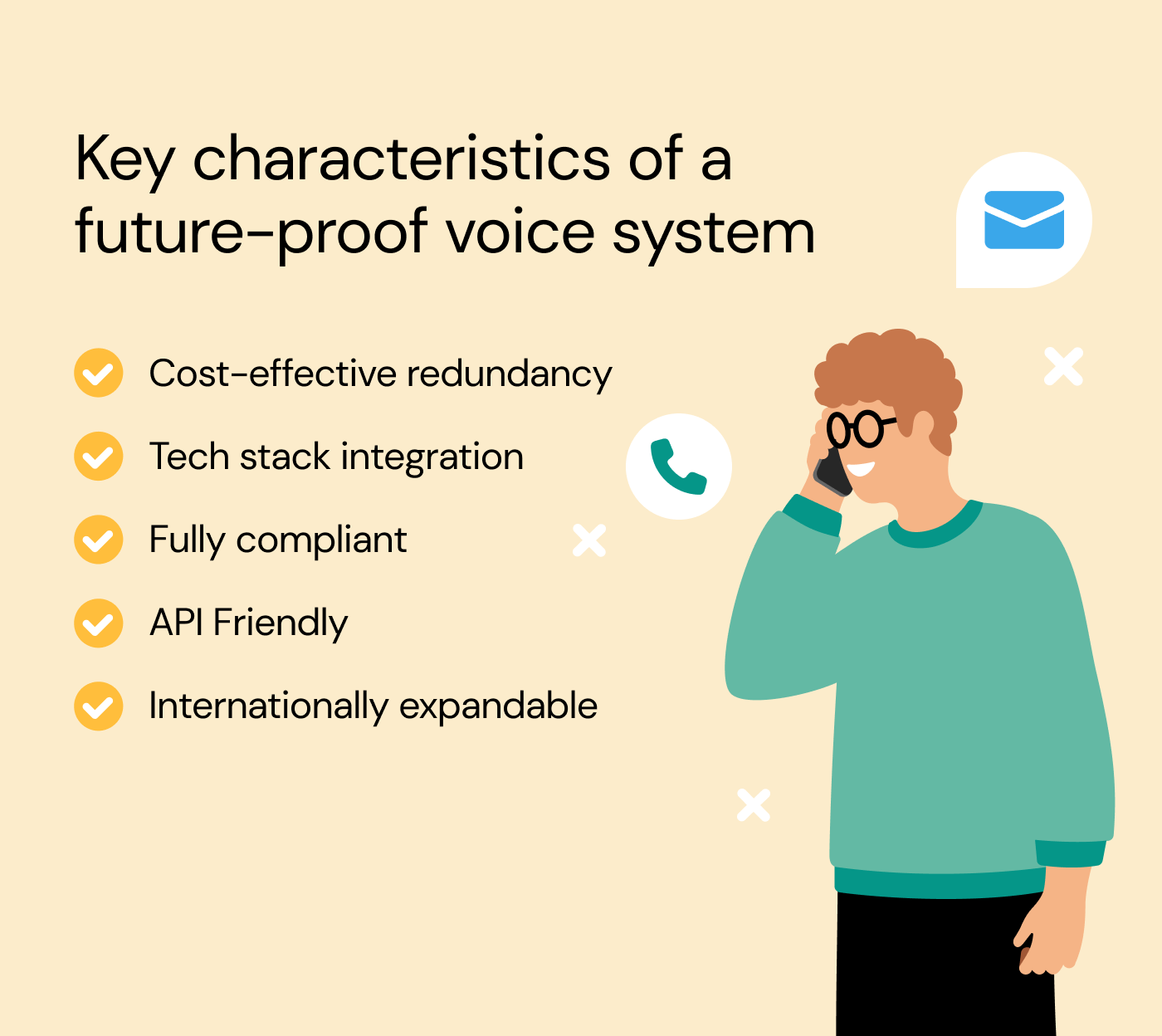Future proofing isn’t just a trendy phrase in tech — it’s a strategic approach to embracing and preparing for emerging technologies. As we see rapid advancements in AI, machine learning, and network technologies, the way businesses and consumers communicate is transforming. Your voice communications must evolve in response to these changes.
But what exactly does a future-proof voice system require? Predicting the future might seem uncertain, but the direction of voice telecommunications is clearer than you might think. Read on to discover what a future voice system looks like and how you can start preparing now.
Attributes of a future proofed voice system
Future proofing your voice communications might appear challenging, but we already have insights into what the future entails. Let's explore the key characteristics of a future-proofed voice system.
Cost-effective redundancy
Redundancy is crucial for uninterrupted service, but it must be cost-effective. A future-proofed system uses geo-redundant infrastructure, ensuring your voice communications remain active even if primary services fail.
Tech stack integration
Your voice systems should integrate seamlessly with your existing tech stack. This includes linking customer and partner data with your CRM and ensuring easy connectivity with co-workers.
A future-proofed voice system integrates with your current tech stack and is ready for whatever new apps you may use in the future. Simplifying the flow of data between your systems not only reduces frustration but also improves productivity and adds value to everything in your tech stack.

Fully compliant
Future-proofing also means adhering to regulatory requirements, such as RAY BAUM'S Act, Kari's Law, Enhanced 911 (E911), and STIR/SHAKEN. This ensures your system not only utilizes cutting-edge technology but also meets legal standards.
RAY BAUM’S Act (Section 506)
Multi-line telephone systems are mandated under RAY BAUM’S Act to send dispatchable information for all 911 calls — including the caller's exact floor and office number, so first responders know exactly where to go.
Kari’s Law
Under Kari’s Law, all multi-line telephone systems must be able to reach 911 directly, without the previously required 9 to reach an outside line. This law is designed to make accessing vital services easier and less error prone.
Enhanced 911 (E911)
It’s vital for all future-ready voice systems to properly route 911 calls to the local public safety answering points (PSAP) and provide dispatchable information. Otherwise, 911 calls will be routed to the national center and incur a fee. Therefore, the FCC mandates E911 capabilities.
STIR/SHAKEN
Maliciously spoofed numbers and robocalls have become a significant problem. STIR/SHAKEN is a series of protocols designed to digitally validate calls before handing them off to combat malicious callers. The protocols have been legally mandated by the U.S. Federal Communications Commission (FCC) and the Canadian Radio-television and Telecommunications Commission (CRTC) and were designed to expand outside of these regions in the future.
Legacy voice systems will struggle to meet these requirements, while many agile cloud-based systems are already compliant. Future-proofing your voice system makes compliance easy. It also allows you to keep up with new changes.
API-friendly
Similar to tech stack integration, your voice communications should be API-friendly to enable the flow of data between critical apps and systems.
An API-friendly system will automatically send data to your CRM, PowerBI, Microsoft ecosystem, and other vital tools your business relies on.
Additionally, you can use APIs to create unique relationships between your critical systems to fit your business’s different needs. For example, you can develop a single-pane dashboard, turning vital data into deep insights for ticketing systems or leveraging call data in marketing campaigns.
Internationally expandable
One of the biggest flaws of legacy phone systems is their reliance on national infrastructure. It’s one of the main reasons international calls can still be costly. Using a legacy system means paying to use additional infrastructure.
A modern cloud business phone system is internationally expandable and scalable. This capability is key for businesses planning to expand or simply communicate with partners, vendors, and customers internationally.
Be ready for the future of voice communications
Predicting the future of voice communications isn't as elusive as it might seem. Essential elements like high uptime, regulatory compliance, API integration, and global scalability define a future-proof phone system. Sinch offers services to meet each of these needs, helping you embrace the future today.
Interested in further insights on how to future-proof your voice communications? Download our latest e-book for a comprehensive guide to a future-proofed voice system.




